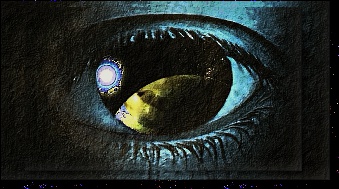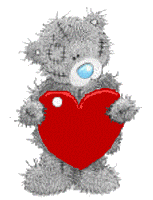
|
|



































Well..... as you can see I've been all over the world and back! trying to solve the mystery of this manuscript... |
Had to bring in my special team to back me up! |
I'd like to present you to Mack and his band of karate penguins! Orvil, Sam, and Winston! |
Mack |
Orvil |
Sam |
Winston |
We've ready Boss... Where to first? Let's rock! |
Ok....Mack! Keep your flippers on! |
Let me think a minute........ Ok...let's start where it was first discovered. |
That's a good place boss! |
Ok Winston, as I was saying........ |
It seems that in 1912, the book collector Wilfrid M. Voynich found this manuscript in a chest in the Jesuit College at the Villa Mondragone, in Frascati Italy. |
From a piece of paper which was once attached to the Voynich manuscript, it is known that the manuscript once formed part of the private library of Petrus Beck S.J., 22nd general of the Society of Jesus. |
What did it say...Tank? I can't make out a word of this! |
Hold on Mack! There's more to this story....... You're flipping ahead! |
When Voynich found the manuscript, there was a letter in it written by Johannes Marcus Marci of Cronland, and addressed to Athanasius Kircher. The letter is dated 1666. It says that the manuscript was bought by Emperor Rudolph II for the princely sum of 600 ducats or around $14,000 dollars! It was indeed a princely sum!. |
Marci asks Kircher to attempt to decipher the manuscript. He also mentioned Roger Bacon as a possible author, although there is no clear evidence for this. |
Well......did he decipher the manuscript? |
In fact, the answer is a BIG NO! |
Get this, NO ONE HAS......YET! |
I need to sit down and have a drink of Penguin Kooler....... but why hasn't the book been decifered? Who wrote it? When was it written? Enquiring penguin minds want to know! |
Never fear, Super Tank is here to answer all ! |
As far as the age of the manuscript, Wilfrid Voynich judged it to date from the late 13th century, on the evidence of the calligraphy, the drawings, the vellum, and the pigments. |
As to who wrote it......no one knows. There was some speculation that Roger Bacon wrote the manuscript. |
Roger Bacon or Doctor Mirabilis,Wonderful Teacher, was the most famous Franciscan friar of his time.. He worked on optics, and at the request of Pope Clement IV he wrote a series of books which amounted to an encyclopedia of science. He also worked on alchemy. |
He kept much of his work secret from his fellow Franciscans, but nonetheless, in 1278 they imprisoned him on the charge of "suspected novelties" in his teaching. |
In his Letter on the Secret Works of Art and the Nullity of Magic, he wrote "The man is insane who writes a secret in any other way than one which will conceal it from the vulgar and make it intelligible only with difficulty even to scientific men and earnest students.... Certain persons have achieved concealment by means of letters not then used by their own race or others but arbitrarily invented by themselves." |
Did he write the manuscript? Well, who knows, and Roger isn't talking! |
Hey guys, what are you up to? |
Amelia Penguinheart, what are you doing here? |
Got lost in the fog again...so what's up with this manuscript.....What does it look like? Why were you in Petra? |
To answer you second question first....there are those that believe that the text may have originally been written in a derivative of Nabataean Script. The arguments for a Nabataean manuscript are: |
* The presence of Nabataean characters in the character set used * The glyphs in the manuscript are of Roman and Arabian origin, pointing to a very early date, and a location in Romanized Arabia * The use of Nabataean stars * The collection of plants, stories, etc., from many locations around the earth would have been typical of a Nabataean scholar/ merchant during the Roman Empire. * The alphabet uses 22- 27 characters. The Nabataean alphabet has 22 characters * The words are short, pointing to an unvoweled text. Nabataean is unvoweled * The presence of a number of plants that are native to Nabataea |
Who were the Nabataeans? |
They were an ancient Semitic, trading people of southern Jordan, Canaan and the northern part of Arabia. |
Were they the originators of this manuscript? Again the question is unanswered............... |
OK!..we get the point, this is truly a strange manuscipt..... so can we see some pages? |
Ok, Amelia......here's some pages from the book..... |
Well, it's about time if I do say so myself! |
You know.....you sound a lot like Commander Baby Girl...... Is that a compliment or what? Or what is more like it! |
There is also the existance of a manuscript with similar script in Jordan. The Qusus Manuscript, which has also never been translated! |
Centered at the ancient city of Petra, located in what is now the modern kingdom of Jordan, the Nabataeans built a kingdom in the 2nd century BCE that grew prosperous from trade routes that crisscrossed their territory. |
What are they famous for? |
They are remembered for the incense route which moved tons of incense from southern Arabia to the temples and homes of Europe and North Africa. |
They were also the merchants who traveled between the Egyptian, Greek, and Roman Empires on one hand and India, China, and the spice islands on the other. |
The Nabataeans also explored much of the world. Their explorers carved their initials in rocks wherever they went, leaving their marks across Asia, Africa, Australia, South America and North America. |
Unidentified Plants |
Astrology or Astronmy |
Microscopes |
Telescopes |
Recipes |
Some theories as to what the book contains are wide and far... for instance.... A Herbal section (mostly unidentified and fantastic plants), an Astronomical section (with most zodiac symbols), a Biological section (with some "anatomical" drawings and human figures), a Cosmological section (with circles, stars and celestial spheres), a Pharmaceutical section (with vases and parts of plants) and a Recipes section (with many short paragraphs). |
It's mind boggling boss! |
You're so right.....Winston... |
The question still remains.. Who wrote it and why?? |
Was it Roger Bacon? The Nabataeans? Or someone as yet to be discovered........ |
Will the manuscript ever be decifered? Or is the true mystery of the manuscript is that it can't be decifered? at least for now............... |
Well this is certainly a challege..... Hey Time Adventurers, are you ready to dive into this book? You could be the one who unlocks the key to this mystery! |
It is currently housed at the Beinecke Rare Book Library at Yale, with catalogue number MS 408 and insured for 20 million dollars! |
Just click on the book to take you to the library.. |
Hey my stalworth band, are you ready to continue our search? |

We're ready Boss! |
Amelia? |
Yup...just getting my bearings! |
While me and my band continue our research.... Don't forget to check out what the rest of the crew is up to..... They're also writing some chapters on some very unusual adventures! |
Commander Tank.... over and out...see you on the flip side! |
Music from the Album Between Light and Shadow by Triplexity distributed under Creative Commons Attribution-Noncommercial-Share Alike 3.0 Unported |
Photo of Commander Tank, Copyright 1999-Present by J Shahverdian |